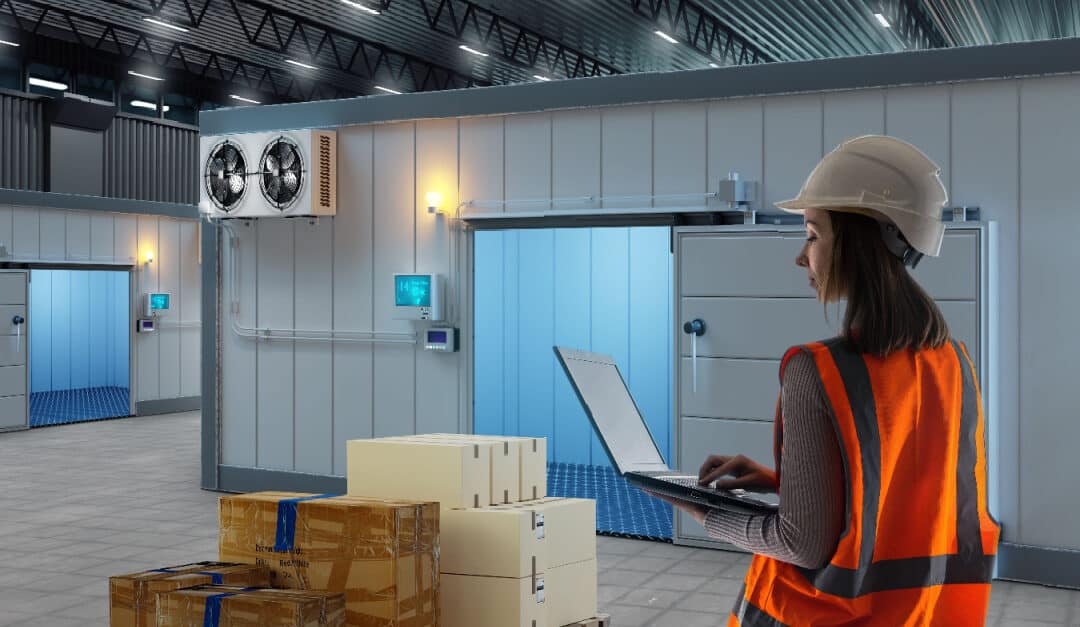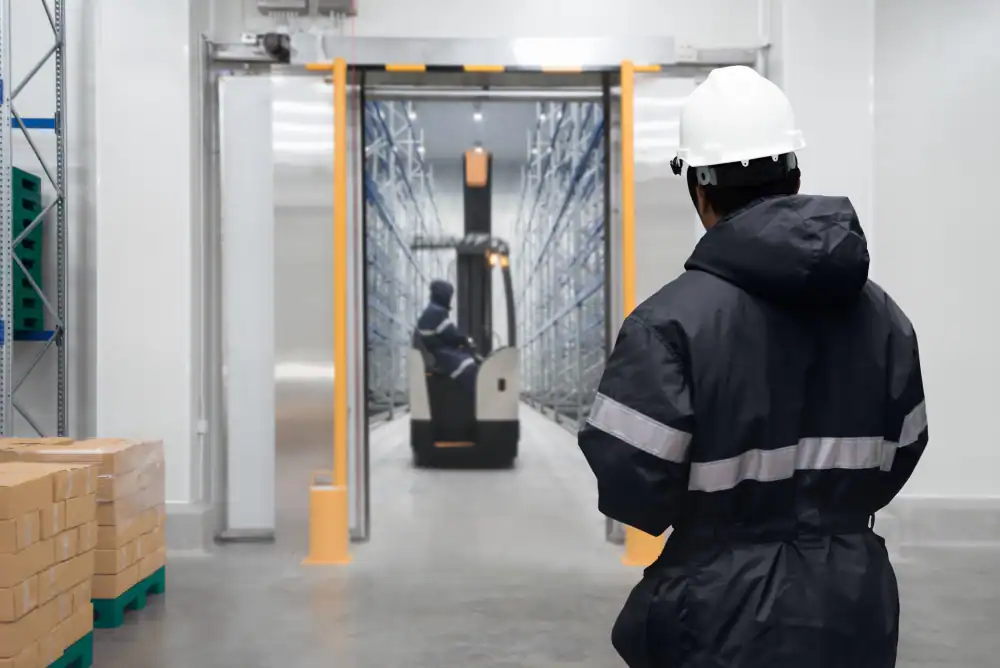Over the past decade, the logistics sector has witnessed significant transformation driven by technological advancements, evolving consumer demands, and the globalization of supply chains. Among the most critical developments is the innovation in cold chain logistics—a specialized transportation and storage system designed to maintain temperature-sensitive products at precise conditions throughout transit and warehousing. This sector’s growth carries substantial implications for specialty Real Estate Investment Trusts (REITs) that focus on industrial and logistics properties tailored to temperature-controlled environments.
This article explores recent innovations in cold chain logistics and analyzes how these advancements shape the strategies, asset management, and growth trajectories of specialty REITs invested in this niche but rapidly expanding market.
The Rising Importance of Cold Chain Logistics
Cold chain logistics encompasses the controlled temperature management of goods such as pharmaceuticals, perishable foods, chemicals, and even certain electronics. Maintaining a strict cold chain is essential to preserving product integrity, safety, and compliance with regulatory standards. Breaks in the cold chain can lead to spoilage, contamination, and significant financial losses.
Globalization and e-commerce growth have increasingly complicated supply chains, creating demand for sophisticated cold storage and transportation solutions. The pharmaceutical industry, particularly with the rise of biologics and vaccines requiring ultra-low temperature storage, has become one of the primary drivers of this sector. Likewise, the food industry’s emphasis on freshness, sustainability, and expanded distribution networks fuels investment in reliable cold chain infrastructure.
Specialty REITs play a pivotal role by providing assets tailored to these demanding specifications, including temperature-controlled warehouses, refrigerated trucking terminals, and advanced monitoring systems embedded in facilities.

Innovations Transforming Cold Chain Logistics
Recent technological and operational innovations are revolutionizing cold chain efficiency, resiliency, and scalability. These advancements enable specialty REITs and their tenants to capitalize on new opportunities while addressing long-standing challenges.
One notable trend is the integration of Internet of Things (IoT) devices within cold storage units and transport vehicles. Sensors continuously monitor temperature, humidity, and other environmental factors, transmitting real-time data to centralized platforms. This allows proactive adjustments and rapid responses to anomalies, reducing product loss and regulatory risks.
Automation and robotics are increasingly deployed in cold warehouses to optimize space usage, improve picking accuracy, and minimize human exposure to harsh conditions. From automated guided vehicles (AGVs) to robotic palletizers, these innovations enhance operational efficiency and reduce costs.
Advanced insulation materials and energy-efficient cooling systems contribute to sustainability goals while reducing utility expenses. Specialty REITs benefit when tenants seek properties equipped with green technologies, aligning with environmental, social, and governance (ESG) principles.
Blockchain technology also begins to emerge as a tool for cold chain transparency, enabling secure, tamper-proof records of product handling that satisfy stringent quality controls and regulatory requirements.
Tailoring Industrial Properties for Cold Chain Needs
Cold chain facilities differ markedly from standard warehouses due to the need for precise environmental control, redundancy systems, and regulatory compliance. Specialty REITs must design and manage properties with advanced HVAC setups, backup power supplies, and reinforced building envelopes to prevent temperature fluctuations.
The rise of “multi-temperature” warehouses, which accommodate simultaneous storage of products at different temperature ranges—from ambient to deep freeze—demands sophisticated spatial planning and operational flexibility. This complexity influences capital expenditure and ongoing maintenance considerations.
Strategically located properties near transportation hubs, airports, and urban centers are increasingly valuable in cold chain logistics, enabling expedited distribution. Specialty REITs that invest in such locations enhance tenant appeal and capture premium rent premiums.
Economic and Market Dynamics for Specialty REITs
The cold chain logistics market is expanding at a robust pace, driven by increasing healthcare demands, evolving consumer preferences for fresh and frozen foods, and regulatory tightening globally. This growth translates into rising demand for cold storage and temperature-controlled distribution centers, directly benefiting specialty REITs focused in these areas.
Financially, cold chain assets generally command higher rental rates compared to traditional warehouses due to their specialized nature and cost-intensive construction. Tenants operating in these facilities tend to commit to longer lease terms, given the integration complexity, providing REITs with steady income streams.
However, the high capital intensity of developing and retrofitting cold chain properties requires specialty REITs to manage investment carefully. Capital deployment must balance acquiring cutting-edge capabilities with ensuring competitive returns, particularly in markets experiencing increased competition.
Market cyclicality risks exist as well, particularly given the sensitivity of cold chain tenants—such as pharmaceutical companies—to regulatory changes, technological shifts, and product life cycles. Diversification across industries and geographies helps mitigate some exposure.
The Role of Regulatory Compliance
Cold chain logistics intersects heavily with regulatory frameworks designed to ensure product safety and quality. Agencies such as the U.S. Food and Drug Administration (FDA), European Medicines Agency (EMA), and international bodies impose strict standards on temperature monitoring, documentation, and facility maintenance.
Specialty REITs benefit from a deep understanding and integration of regulatory compliance in property management practices. Facilities must incorporate secure data logging systems, audit trails, and validation processes to support tenants’ regulatory obligations.
Failing to meet these stringent guidelines can result in penalties, product recalls, and reputation damage, emphasizing the strategic advantage for REITs that maintain best-in-class cold chain infrastructure and compliance support.

Sustainability and Cold Chain Logistics
As sustainability gains prominence across real estate sectors, cold chain logistics grapples with significant energy consumption and emissions challenges. Refrigeration and climate control equipment represent major utility expenses and sources of carbon emissions.
Innovations such as eco-friendly refrigerants, solar energy integration, waste heat recovery, and energy management software are key to reducing the environmental footprint of cold storage. Specialty REITs incorporating these practices enhance asset value, appeal to ESG-focused investors, and meet growing tenant demand for green buildings.
Furthermore, optimizing logistics networks to reduce transportation distances and improve load efficiency contributes to lower overall emissions in cold supply chains, indirectly benefiting REIT property utilization.
Future Prospects and Strategic Opportunities
The outlook for cold chain logistics and specialty REITs remains compelling. Vaccine distribution efforts, particularly in light of recent global public health initiatives, elevate demand for ultra-cold storage capabilities. The food sector’s increasing sophistication in global sourcing and delivery also accelerates cold chain infrastructure requirements.
Specialty REITs can seize growth by expanding cold chain property portfolios, investing in technological retrofits, and forging partnerships with innovative logistics operators. Emphasizing adaptive reuse of industrial properties to add cold storage capabilities represents another avenue for value creation.
The convergence of blockchain, big data analytics, and advanced robotics will further enhance operational precision and transparency, setting new industry standards. REITs positioned to support this technology evolution will secure a competitive edge.
Conclusion
Cold chain logistics innovations are reshaping industrial real estate, creating lucrative opportunities for specialty REITs focused on temperature-controlled facilities. Integrating cutting-edge technology, superior regulatory compliance, sustainability, and strategic location expertise allows these REITs to deliver compelling value propositions to tenants and investors alike.
The ever-growing demand for secure and efficient handling of perishable goods, pharmaceuticals, and sensitive materials ensures cold chain assets will remain vital in the global supply chain ecosystem. Specialty REITs that actively embrace the complexities and innovations of this sector can expect to achieve durable income streams and long-term portfolio resilience.
In a market where precision, reliability, and technology intersect, cold chain logistics stands out as a transformative force, offering specialty REITs a powerful growth engine amid evolving industrial real estate trends and the expanding digital economy.
Frequently Asked Questions about Cold Chain Logistics Innovations and Specialty REITs
-
What is cold chain logistics?
Cold chain logistics involves temperature-controlled storage and transportation to preserve perishable products like pharmaceuticals and food. -
Why is cold chain logistics important for specialty REITs?
Specialty REITs invest in temperature-controlled facilities that cater to industries requiring strict environmental conditions, ensuring steady demand and premium rents. -
What are recent innovations in cold chain logistics?
Advancements include IoT-enabled sensors, automation, energy-efficient refrigeration, and blockchain for supply chain transparency. -
How do cold chain facilities differ from standard warehouses?
They require advanced HVAC systems, backup power, precise temperature controls, and compliance with strict regulatory standards. -
What industries drive demand for cold chain real estate?
Healthcare, pharmaceuticals, fresh and frozen foods, and chemical sectors heavily rely on cold chain infrastructure. -
How do regulatory requirements impact cold chain logistics?
Facilities must adhere to health and safety regulations with rigorous monitoring, documentation, and compliance, influencing design and operations. -
What sustainability practices are used in cold chain logistics?
The use of eco-friendly refrigerants, energy recovery, solar integration, and efficient building designs helps reduce environmental impact. -
What growth opportunities exist for specialty REITs in cold chain logistics?
Expanding portfolios with ultra-cold storage, retrofitting existing buildings, and leveraging technologies to improve operational efficiency offer strong prospects.










